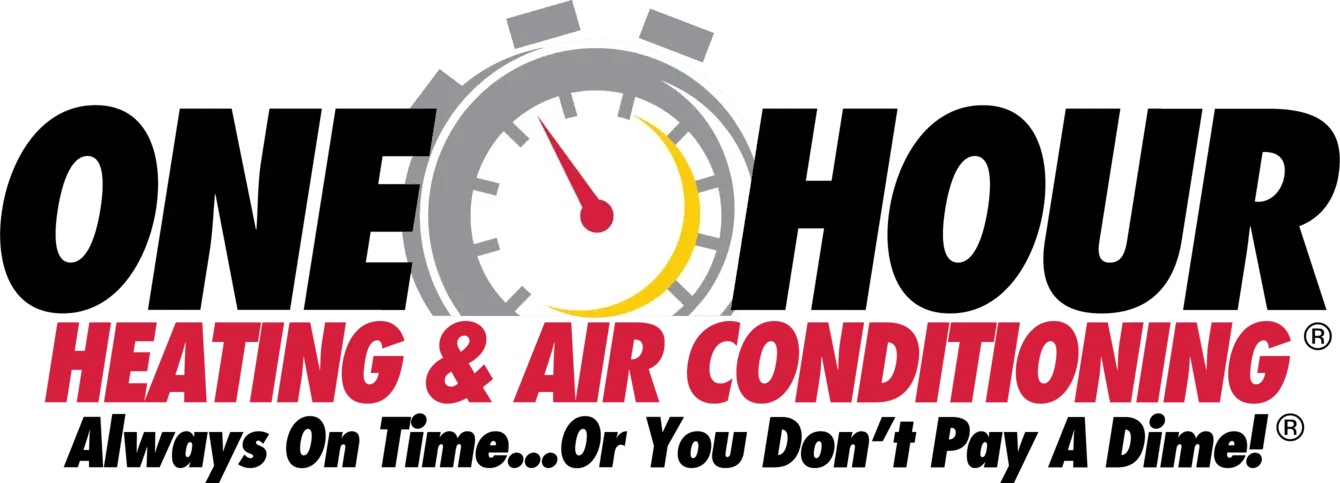Why regular AC maintenance is a must for West Valley homes
Summer temperatures in West Valley can reach extreme levels, putting enormous strain on air conditioning systems. Many homeowners assume their AC units will work perfectly without any care, but this approach often leads to costly breakdowns during the hottest days of the year.
Regular AC maintenance prevents unexpected failures and keeps cooling systems running efficiently when West Valley residents need them most. Without proper upkeep, air conditioners work harder to cool homes, leading to higher energy bills and shorter system lifespans.
The combination of dust, extreme heat, and constant use during summer months requires homeowners to take a proactive approach to AC care, ensuring their systems can handle the demanding conditions year after year.
In this article, you’ll learn how AC maintenance protects West Valley homes from extreme heat, system failures, and high energy bills.
Here’s what you need to know.
- The importance of regular AC maintenance
- Key benefits of regular AC service
- What's included in professional AC maintenance
- Why West Valley homes need AC maintenance more than ever
Keep reading! Professional maintenance addresses the unique challenges that West Valley's desert climate creates for cooling systems.
The importance of regular AC maintenance
Regular maintenance keeps air conditioners running at peak performance while preventing costly repairs and breakdowns. Proper care improves energy efficiency, extends equipment life, and ensures reliable cooling when West Valley residents need it most.
How maintenance improves cooling efficiency
Clean air filters allow proper airflow through the AC system. Dirty filters force the unit to work harder and use more energy to cool the same space.
According to the U.S. Department of Energy, routine air conditioner maintenance—including filter changes, coil cleaning, and drain clearing—helps prevent system performance decline and unnecessary energy use. Keeping these components clean ensures the system runs efficiently even during peak summer loads.
Regular coil cleaning removes dirt and debris that blocks heat transfer. When evaporator and condenser coils are clean, the system cools air more effectively with less energy consumption.
Key efficiency improvements from maintenance:
- Clean filters reduce energy use by 5-15%
- Proper refrigerant levels ensure optimal cooling
- Lubricated parts reduce friction and energy waste
- Calibrated thermostats maintain accurate temperatures
Technicians check refrigerant levels during maintenance visits. Low refrigerant makes the system work harder to reach desired temperatures. Proper levels ensure the AC cools efficiently without wasting electricity.
Belt and motor maintenance keeps components running smoothly. Well-maintained parts require less energy to operate and cool homes faster.
Preventing AC breakdowns during peak summer
Regular inspections catch small problems before they become major failures. Technicians spot worn parts, loose connections, and potential issues that could cause breakdowns.
West Valley summers put heavy demands on AC systems. Units that receive regular maintenance handle this stress better than neglected equipment.
Common breakdown causes prevented by maintenance:
- Clogged drain lines causing water damage
- Worn electrical connections creating system failures
- Dirty components causing overheating
- Low refrigerant levels damaging compressors
Cleaning and adjusting components reduces system strain. When parts work properly together, the entire unit operates without excessive stress that leads to failures.
Emergency repairs during summer heat waves cost more than scheduled maintenance. Preventing breakdowns saves money and keeps families comfortable when temperatures soar.
Extending AC lifespan with routine service
Well-maintained AC units typically last 15-20 years compared to 10-12 years for neglected systems. Regular service protects the significant investment homeowners make in cooling equipment.
Lubrication prevents metal parts from wearing against each other. This simple maintenance step extends the life of motors, fans, and other moving components.
Maintenance tasks that extend equipment life:
- Cleaning coils prevents corrosion
- Tightening electrical connections stops arcing damage
- Replacing filters protects internal components
- Checking refrigerant prevents compressor damage
Professional technicians identify parts that need replacement before they fail completely. This proactive approach prevents damage to other system components.
Regular maintenance maintains manufacturer warranties. Many warranty agreements require proof of annual service to remain valid for expensive repairs.
Key benefits of regular AC service
Regular AC service provides three main advantages for West Valley homeowners: lower monthly energy costs, fewer expensive repair bills, and better home comfort year-round.
Lowering energy bills with better performance
Clean AC components use less energy to cool homes effectively. When filters get dirty or coils collect dust, the system works harder to reach the same temperature.
Regular maintenance keeps all parts running smoothly. Clean air filters allow proper airflow through the system. Clear condenser coils transfer heat more efficiently.
A well-maintained AC system can use 10-15% less energy than a neglected one. The U.S. Department of Energy estimates that preventive maintenance can reduce energy use by 5% to 20%, particularly in commercial HVAC systems—savings that can also benefit residential units when maintenance is consistently applied. This translates to real savings on monthly electric bills.
Technicians also check refrigerant levels during service visits. Low refrigerant makes the system run longer to cool the house. Proper refrigerant levels help the AC reach target temperatures faster.
Regular tune-ups ensure the thermostat reads temperatures correctly too. An accurate thermostat prevents the system from running unnecessarily.
Reducing costly repairs through early detection
Service technicians spot small problems before they become major failures. A loose belt costs $20 to replace but can damage the motor if it breaks completely.
Early detection saves money on repairs in several ways:
- Worn parts get replaced before they fail completely
- Small issues don't damage other system components
- Emergency repair calls cost more than scheduled maintenance
Many AC breakdowns happen during the hottest months when systems work hardest. Regular service helps prevent these inconvenient failures.
Technicians check electrical connections, moving parts, and safety controls during maintenance visits. They can identify components that show signs of wear.
Warranty protection also requires proof of regular maintenance. Skipping service appointments can void manufacturer warranties on expensive parts.
Enhancing comfort and consistent cooling
Regular AC service ensures even temperatures throughout the home. Clean systems distribute cool air more effectively to all rooms.
Improved air quality comes from regular filter changes and coil cleaning. Dirty components can spread dust and allergens through the house.
Well-maintained systems also control humidity better. High humidity makes homes feel warmer even at lower temperatures.
Regular service prevents hot spots in different rooms. Technicians check ductwork and airflow to ensure balanced cooling.
Consistent performance means fewer temperature swings during the day. The system reaches the thermostat setting quickly and maintains it efficiently.
Quiet operation is another benefit of regular maintenance. Clean, well-lubricated components run more smoothly with less noise.
What's included in professional AC maintenance
Professional AC maintenance covers several key tasks that keep cooling systems running efficiently. Technicians clean critical components, test system performance, and verify safe operation during each service visit.
Cleaning coils, filters, and ductwork
Air filters need regular replacement or cleaning to maintain proper airflow. Dirty filters make the AC work harder and reduce efficiency. Most technicians replace standard filters during maintenance visits.
Evaporator and condenser coils collect dirt over time. This buildup reduces heat transfer and forces the system to use more energy. Technicians clean both coils using specialized tools and cleaning solutions.
The outdoor condenser unit often accumulates debris like leaves, grass, and dirt. Technicians remove this buildup and clean the surrounding area. They also straighten bent fins that can block airflow.
Ductwork inspection reveals leaks, blockages, or damage. Technicians check accessible ducts for problems that reduce efficiency. They may recommend duct cleaning if significant dust or debris is present.
Key cleaning tasks include:
- Filter replacement or cleaning
- Evaporator coil cleaning
- Condenser coil cleaning
- Debris removal from outdoor unit
- Basic duct inspection
Checking refrigerant and system components
Refrigerant levels must stay within the correct range for proper cooling. Low refrigerant often indicates leaks that need repair. Technicians measure pressure levels and add refrigerant when needed.
The compressor is the heart of the AC system. Technicians test its operation and check for unusual sounds or vibrations. They also inspect
Why West Valley homes need AC maintenance more than ever
West Valley's extreme desert climate creates unique challenges that put extra strain on air conditioning systems. The combination of intense heat, dust storms, and year-round AC usage makes regular maintenance essential for system reliability and efficiency.
Coping with desert heat and dusty conditions
West Valley temperatures regularly exceed 115°F during summer months. This extreme heat forces AC systems to work at maximum capacity for extended periods.
The constant strain leads to faster wear on components like compressors and fans. Systems running at peak loads consume more energy and generate more heat internally.
Desert dust creates additional problems:
- Clogged air filters reduce airflow
- Dust buildup on coils decreases cooling efficiency
- Debris blocks outdoor unit airflow
- Fine particles damage moving parts
Dust storms are common in West Valley during monsoon season. These events can deposit large amounts of debris on outdoor units in just hours.
Regular filter changes become critical in dusty conditions. Homeowners may need to replace filters monthly instead of quarterly during peak dust seasons.
Clean coils are essential for proper heat transfer. Dirty evaporator and condenser coils force systems to work harder while providing less cooling.
Local climate challenges for AC systems
West Valley's desert climate creates year-round AC demands. Many homes run cooling systems from March through November.
Extended operating seasons mean components wear out faster than in milder climates. Compressors face particular stress from constant cycling and high ambient temperatures.
Key climate factors affecting AC performance:
- Temperature swings: Daily variations of 30-40°F stress system components
- Low humidity: Dry air affects system efficiency and indoor comfort
- UV exposure: Intense sunlight degrades outdoor unit components faster
- Monsoon moisture: Brief humid periods can cause condensation issues
Refrigerant levels become critical in extreme heat. Low refrigerant forces compressors to work harder and can cause system failure.
Electrical connections expand and contract with temperature changes. Loose connections create safety hazards and system malfunctions.
Why annual service is critical for homeowners
Professional maintenance catches small problems before they become expensive repairs. Technicians can identify worn parts and potential failures during routine inspections.
Annual service includes essential tasks:
- Refrigerant level checks and adjustments
- Electrical connection inspection and tightening
- Cleaning of evaporator and condenser coils
- Lubrication of moving parts
- Thermostat calibration
Well-maintained systems use 15-20% less energy than neglected units. This translates to significant savings on monthly utility bills in West Valley's hot climate.
Regular maintenance extends system lifespan by 3-5 years. Replacement costs for AC systems range from $4,000-$8,000 for most homes.
Emergency repairs during peak summer can cost 50% more due to high demand. Preventive maintenance reduces the likelihood of system failures during extreme weather.
Many manufacturers require annual service to maintain warranty coverage. Skipping maintenance can void warranty protection on major components.
Conclusion
Regular AC maintenance protects West Valley homeowners from costly repairs and system breakdowns. Clean filters and well-maintained components help systems run efficiently.
Key benefits include:
- Lower energy bills
- Better indoor air quality
- Longer system lifespan
- Fewer emergency repairs
West Valley's hot climate puts extra stress on air conditioning systems. Regular maintenance becomes even more important in these conditions.
Professional maintenance catches small problems before they become expensive repairs. Technicians can spot worn parts and fix them early.
Homeowners should schedule maintenance twice per year. Spring and fall are the best times for tune-ups.
Simple tasks like changing filters help between professional visits. Clean filters improve air flow and system performance.
Maintenance tasks for homeowners:
- Replace air filters monthly
- Keep outdoor units clear of debris
- Check thermostat settings
- Listen for unusual sounds
Investment in regular maintenance saves money long-term. Well-maintained systems last longer and work better.
West Valley residents who skip maintenance often face bigger problems later. Emergency repairs cost more than planned maintenance.
Clean, efficient AC systems keep homes comfortable during hot summers. They also maintain healthy indoor air quality year-round.
Regular maintenance is not optional for West Valley homes. It protects both comfort and budget.
Schedule your seasonal AC maintenance today to prevent costly breakdowns and keep your West Valley home cool and efficient.
Frequently Asked Questions
How often should I schedule AC maintenance in West Valley?
You should schedule AC maintenance at least once a year, ideally before peak summer heat. In West Valley’s desert climate, spring and fall tune-ups are often recommended.
What’s included in a professional AC maintenance visit?
A typical maintenance visit includes filter replacement, coil cleaning, refrigerant level checks, electrical inspections, lubrication of moving parts, and thermostat calibration.
Can AC maintenance really reduce my energy bills?
Yes. Clean filters, coils, and properly functioning parts help your system run more efficiently, reducing energy use by up to 15–20% according to the U.S. Department of Energy.
Does regular maintenance extend the life of my AC unit?
Absolutely. Well-maintained AC units can last 15–20 years, while neglected systems often fail after 10–12 years due to component wear and overheating.
Will skipping maintenance void my AC warranty?
Yes, many manufacturers require proof of regular maintenance to keep warranties valid. Skipping service may result in denied claims for costly repairs.















